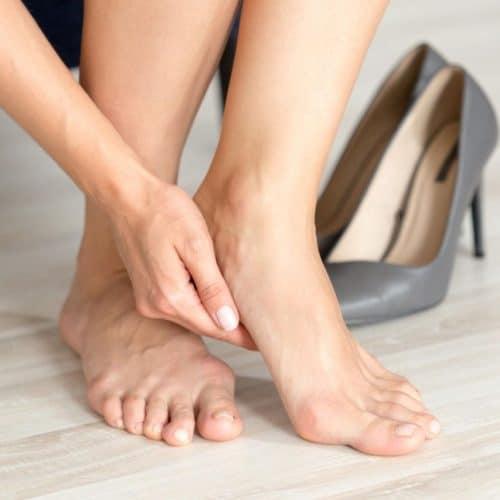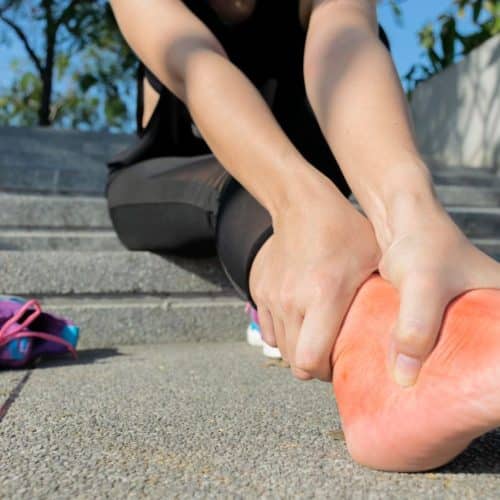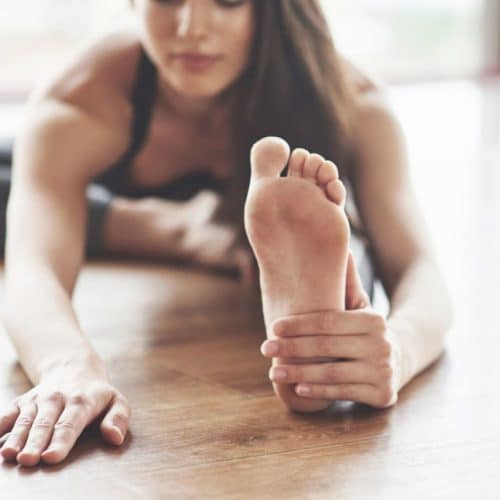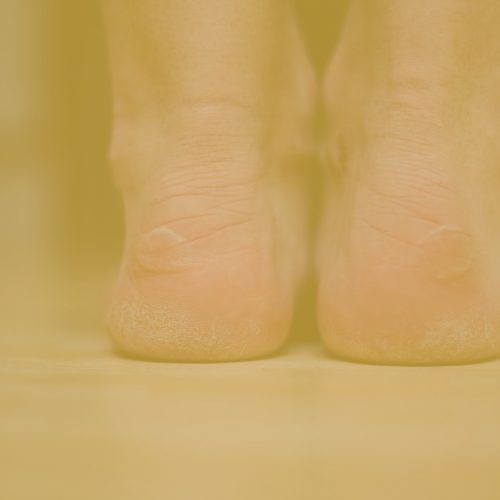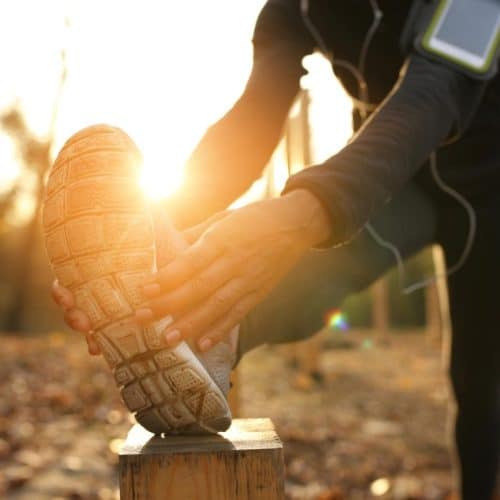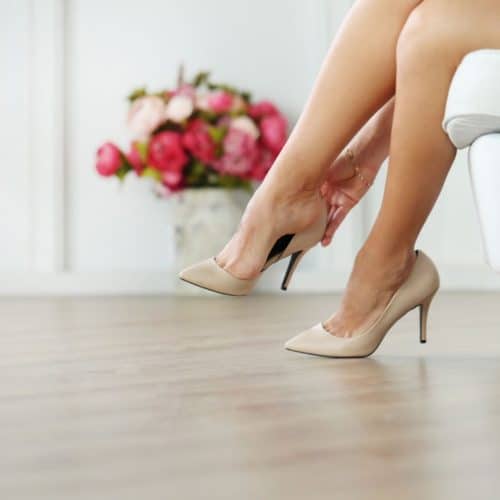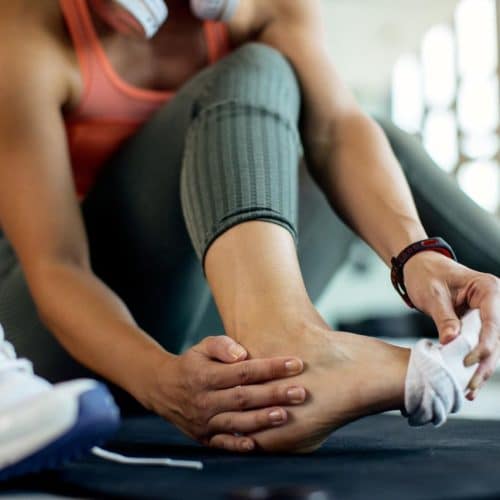Pointe shoes can aggravate ballet dancers with bunions, especially dancers with over-pronated foot types who tend to roll toward the big toe on pointe.
Another thing that can aggravate bunions is if the pointe shoes are not properly fitted, this can add more pressure and stress on the big toe joint.
Choosing pointe shoes for bunions that fit and support your feet in every specification (shape, size, width, vamp, and shank) can reduce the risk of aggravation.
It is recommended to opt for shoes that are not too tight or stiff, especially around the big toe joint.
Most brands will offer a wider shaped style in their range, which can then be fitted to accommodate bunions and any associated support/spacers/padding.
It is important to try as many on as possible to get the right width and fit.
Russian Pointe Rubin
This model comes with a square box and a very wide platform. It also has a very structured shank. This allows the dancer to balance more easily, especially if the dancer has issues with balancing and tilting back and forth.
Nikolay 3007
This model is good for dancers wanting more rotation. The pointe shoes come with a smaller platform which encourages more rotation. Dancers that find it challenging to get around in their pirouettes might benefit from this model.
Capezio Kylee
This model is ideal for dancers who have reduced flexibility and struggle to get onto the box during pointe. This shoe is soft and lightweight. It encourages the dancer to get on pointe.
Bloch Heritage
This model is good for dancers who tend to roll through their pointe shoes during demi. This can happen if the dancer is in a shoe with a vamp that is too long. This shoe has a shorter box and shorter vamp, making it ideal for dancers with shorter toes as well.
Gaynor Minden
This model is good for dancers who want longer-lasting pointe shoes. This particular brand uses materials that allow the shoes to last up to five times longer than other pointe shoes. Instead of using traditional materials, the company opted for a more thinner and flexible material made out of polymer.
In general, each dancer will dance very differently in different models. This all depends on the dancer’s strength, foot type, and other factors to take into consideration.
If you are experiencing any foot pain or bunion soreness we can help. At Well Heeled Podiatry we see a range of dance injuries, undertake pre-pointe assessments and provide footwear education.



